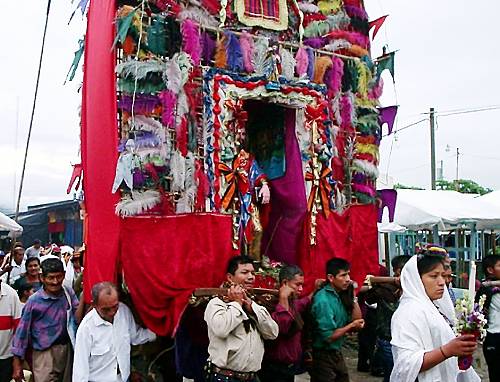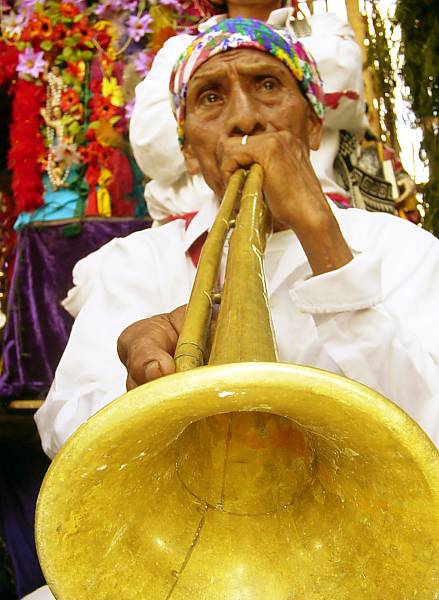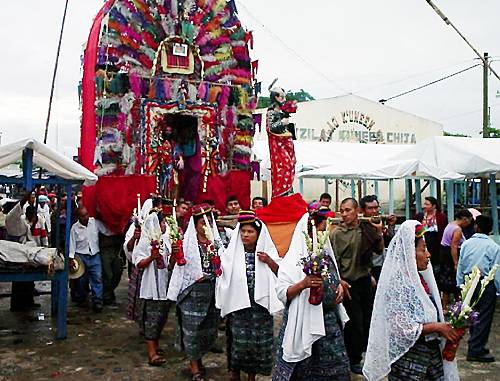Rabinal Achí dance drama tradition
Inscribed in 2008 (3.COM) on the Representative List of the Intangible Cultural Heritage of Humanity (originally proclaimed in 2005)
The Rabinal Achí is a dynastic Maya drama, which developed in the fifteenth century and a rare example of preserved pre-Hispanic traditions. It comprises myths of origin and addresses popular and political subjects concerning the inhabitants of the region of Rabinal, expressed through masked dance, theatre and music. The oral and written narrative is presented by a group of characters, who appear on a stage representing Maya villages, such as Kajyub’, the regional capital of the Rabinaleb’ in the fourteenth century. The narrative, divided into four acts, centres on a conflict between two major political entities in the region. The main characters are two princes, the Rabinal Achí and the K’iche Achí.The other characters are the king of Rabinaleb’, Job’Toj, and his servant, Achij Mun Achij Mun Ixoq Mun, who has both male and female traits, the green-feathered mother, Uchuch Q’uq’ Uchuch Raxon, and thirteen eagles and thirteen jaguars who represent the warriors of the fortress of Kajyub’. K’iche’ Achí is captured and put on trial for attempting to steal Rabinaleb’ children, a grave violation of Maya law. Since colonization in the sixteenth century, the Rabinal Achí dance has been performed on Saint Paul’s day on 25 January. The festival is coordinated by members of cofradías, local brotherhoods responsible for running the community. By taking part in the dance, the living enter into “contact” with the dead, the rajawales, represented by masks. Recalling their ancestors is not simply a means of perpetuating the heritage of the past. It is also a vision of the future, since one day the living will join their ancestors. The impact of armed conflict especially in the departamentos of Rabinal and K’iche has almost led to the disappearance of this dance. Today, it is especially threatened by the precarious economic state of the custodians and the community as a whole. It is also confronted with folklorization and trivialization, which seriously threaten the transmission of knowledge and values associated to the performance of this drama tradition.








